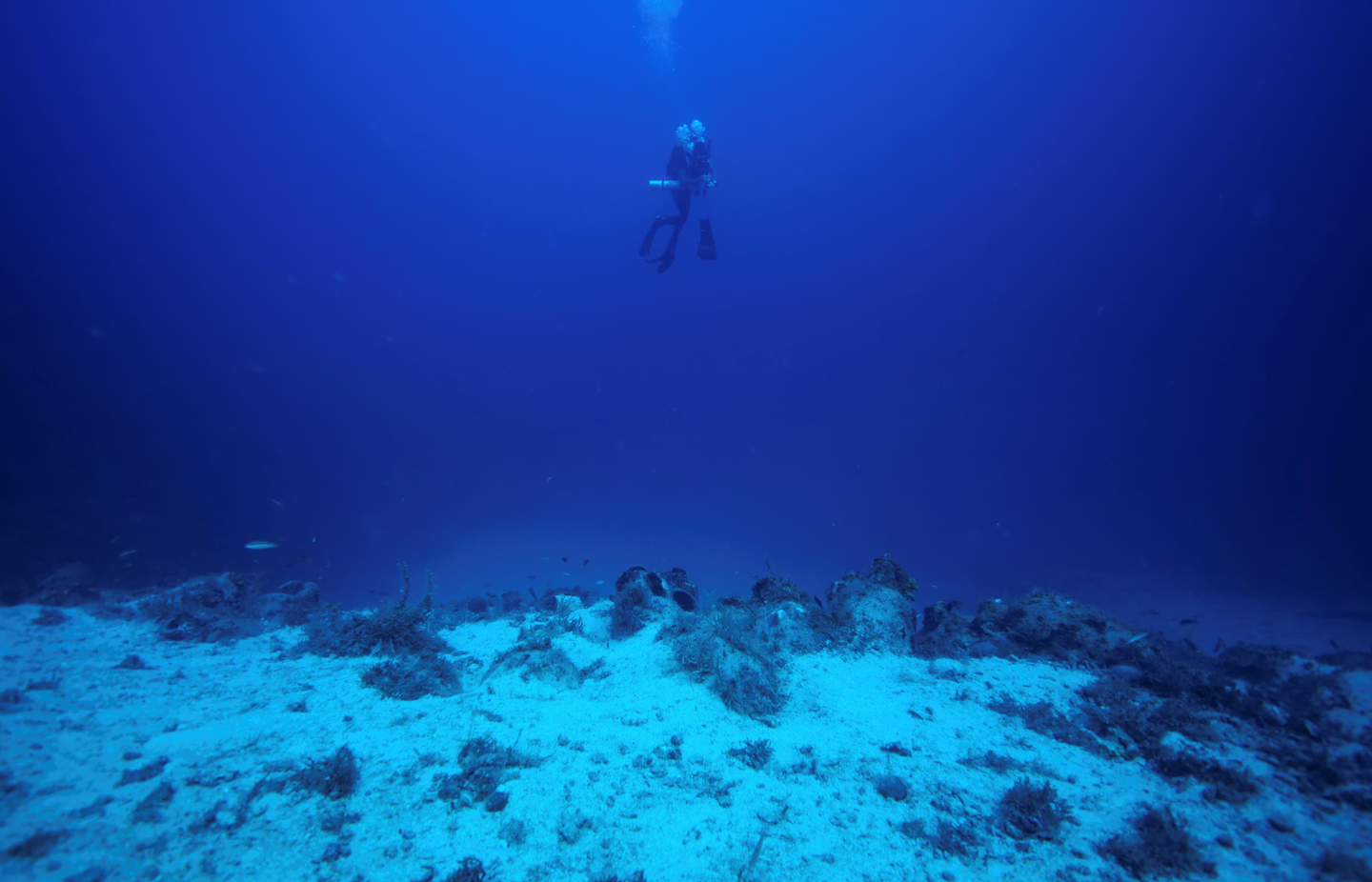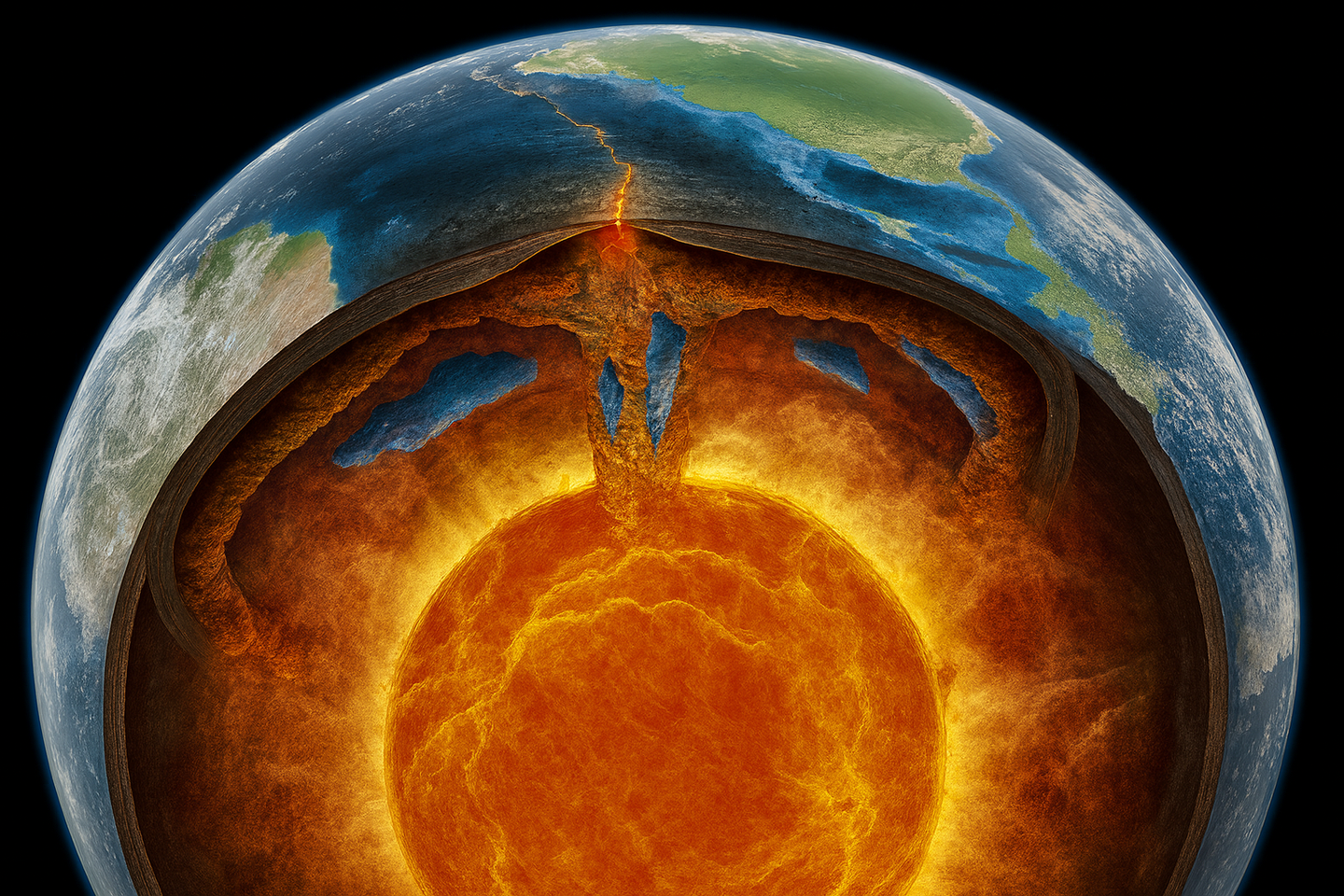Ocean sediment reveals climate extremes and ecosystem upheaval from millions of years ago
Deep-sea sediments from the Pacific Ocean could help predict Earth’s climate future and protect marine ecosystems.

Pacific Ocean sediment cores reveal ancient climate secrets. (CREDIT: CC BY-SA 4.0)
Deep beneath the Pacific Ocean floor, sediment cores hold secrets that could reshape how scientists predict Earth's climate future. These deep-sea layers capture snapshots of ancient oceans, revealing stories of climate extremes and ecosystem upheaval from millions of years ago. As climate challenges become increasingly urgent, unlocking these past conditions could offer vital clues for what's ahead.
Oceans as Climate Archives
The Pacific Ocean is immense—bigger and deeper than any other ocean, storing more carbon dioxide and heat than anywhere else on Earth. Despite its size, much of our understanding comes from only a few well-studied sediment locations. Elizabeth Griffith, a professor of earth sciences at The Ohio State University, emphasizes, “It's easy to forget that two-thirds of our planet is covered with salty ocean water. It’s also hard to realize just how much of it we haven’t explored yet.”
Scientists rely on sediment cores drilled from beneath the ocean floor. These cores reveal detailed records of past temperatures, ocean currents, carbon levels, and marine life responses. However, due to limited samples from Pacific sites, significant knowledge gaps persist.
Searching for Answers in Deep Sediments
Studying these sediments is crucial as human activities dramatically alter Earth’s climate. Burning fossil fuels releases carbon dioxide, causing ocean temperatures to rise, increasing acidity, reducing oxygen levels, and altering marine ecosystems. Marine heatwaves and destructive storms have become more common, forcing marine species to migrate to survive.
Related Stories
Griffith and colleagues argue that understanding past warm periods is key to predicting future climate scenarios. "Warm periods in Earth's recent history might tell us something about future conditions on Earth and how life will respond to those changes," Griffith explained. Such insights are becoming more urgent as global temperatures climb.
Deep-sea sediment studies form part of The 2050 Science Framework: Exploring Earth by Ocean Drilling, highlighting their central role in climate research. The challenge now is retrieving new cores and reexamining existing collections to answer critical questions about Earth's climate history.
Current records from locations like the Shatsky Rise, Hess Rise, Mid-Pacific Mountains, and Magellan Rise—collectively known as Pacific Highs—offer promising insights. These areas provide carbonate-rich sediments ideal for detailed climate reconstructions.
International Collaboration and Ocean Exploration
To propel this research forward, global scientific teams met in October 2024 at Ohio State’s Stone Laboratory. Their mission was clear: prioritize research efforts and encourage coordinated international projects. Collaborative exploration will gather new sediment cores, address current gaps in climate models, and refine our understanding of past marine conditions.
“Ocean drilling has always been a collaborative effort,” Griffith said. “There’s support for this idea that we’re answering big questions on a scale that you just can’t do in a single lab or just working with a small subset of people.” Such partnerships are vital, particularly following the recent loss of the U.S. riserless drillship, a major setback for ocean science.
Batoul Saad, a PhD student and co-author, underscored the importance of hands-on drilling expeditions, noting they foster critical international collaboration. “Working with legacy core material is a crucial part of my research, but it will never replicate the experience of sailing on a deep-sea scientific drilling expedition,” Saad said.
Training Tomorrow’s Ocean Scientists
In addition to scientific discovery, expanding these drilling efforts will offer invaluable training for the next generation of oceanographers. Young scientists can learn advanced techniques, contribute to global projects, and become skilled researchers prepared to tackle pressing climate challenges.
Future climate predictions depend heavily on accurate climate models. Current models struggle due to insufficient data on past climate extremes, especially regarding the Pacific Ocean. Recovering new sediment samples and revisiting old ones will address these shortfalls, providing stronger, clearer evidence to validate or improve models.
A Call to Action
While funding challenges persist, researchers stress the urgent need for expanded ocean drilling and core collection. The collaborative scientific community hopes government and private sector support will increase, recognizing ocean exploration’s critical role in future environmental strategies.
“As individuals, much of the work of supporting science involves just being curious about the planet we live on,” Griffith advised. "Once you become curious, realizing how much you impact your surroundings leads to better decisions and new scientific discoveries."
Uncovering Earth’s ocean history not only helps scientists understand past climate extremes but also equips society with the knowledge to face future climate uncertainties. Deep-sea sediment cores, therefore, aren't just ancient records—they're essential guides for navigating a rapidly changing climate.
Research findings are available online in the journal Paleoceanography and Paleoclimatology.
Note: The article above provided above by The Brighter Side of News.
Like these kind of feel good stories? Get The Brighter Side of News' newsletter.



